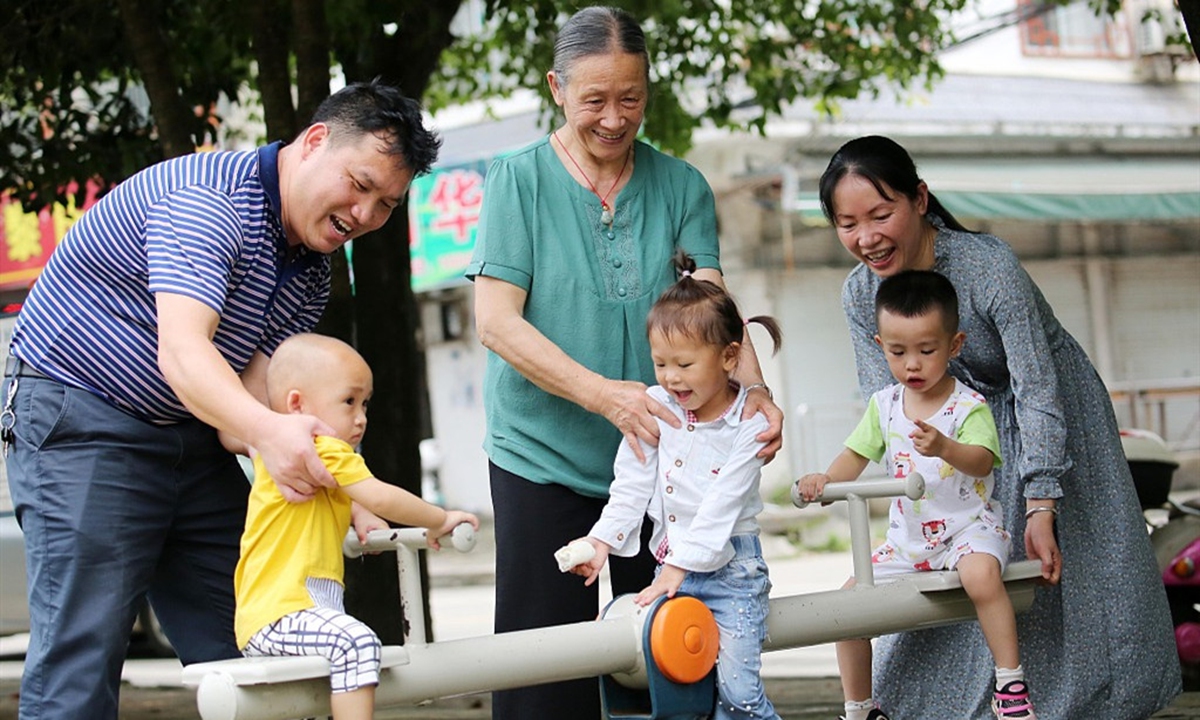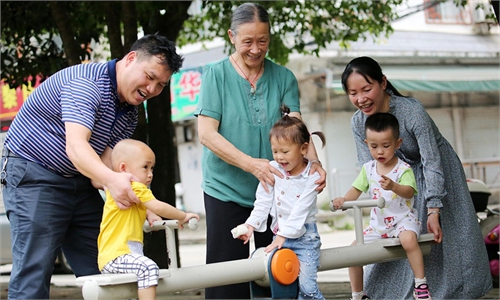
Third child. Photo:VCG
Couples in a village in South China's Guangdong Province will receive up to 3,300 yuan ($510) each month for their newborn babies born after September 1, the latest place to offer cash to families since the legalization of China's third-child policy in August.
Since early September, Huangzhugen village in Zhanjiang has been promoting a new local family planning policy, under which couples will receive subsidies until their babies turn 2 and a half years old, Zhanjiang Daily reported on Tuesday.
Parents of babies born after September 1 will receive 3,000 to 3,300 yuan each month, totaling up to 99,000 yuan for each baby, the report said.
The new policy is for permanent families in the village; those working outside the village or who do not use breastfeeding are ineligible for the subsidy, the report said.
Local officials said that many young couples in the village who were reluctant to have more than one child are now reconsidering. Preliminary data showed that nearly 20 families in the village decided to have more children after the introduction of the new policy.
Prior to Zhanjiang, a county in Northwest China's Gansu Province also announced a house-buying subsidy of up to 40,000 yuan for couples who give birth to two or three children, making the county China's first to introduce a real estate subsidy under the third-child policy.
In July, Panzhihua in Southwest China's Sichuan Province announced cash handouts of 500 yuan per baby every month for local families that have a second or third child, until the babies turn 3 years old.
In May, China announced a further easing of its family planning policy to allow each couple to have up to three children. It came after the number of the country's newborns declined for four consecutive years. Chinese demographers believe the new move is not simply a birth stimulation plan, but a significant step that could lead to more policy changes in improving China's demographic structure and actively responding to the aging trend.

